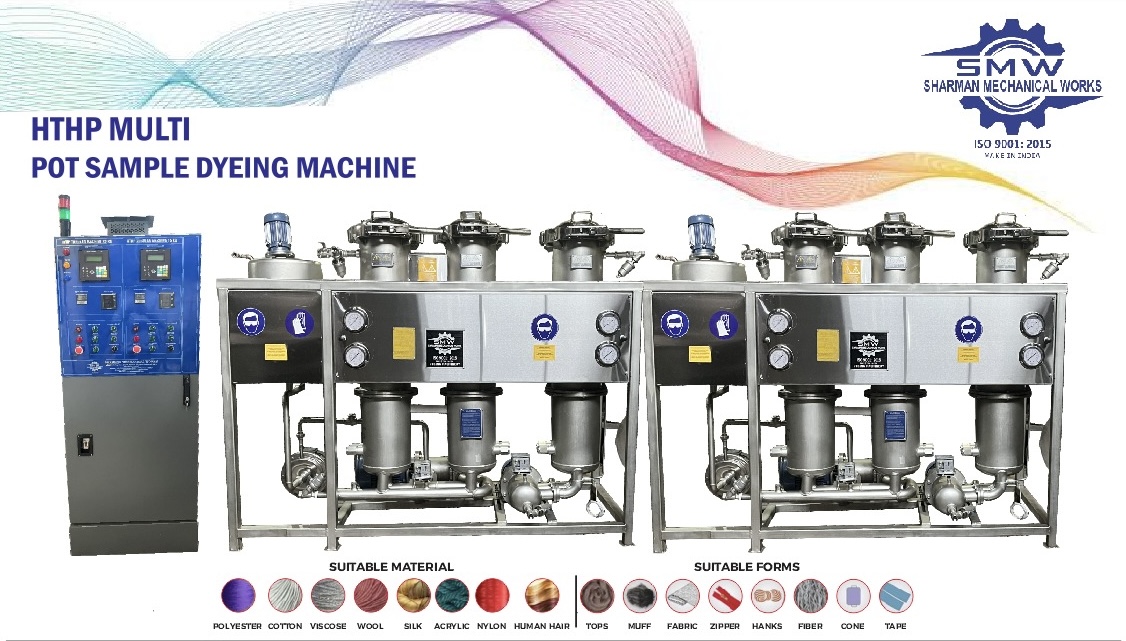
High Temperature High Pressure (HTHP) multipot sampling dyeing machines are advanced textile dyeing systems used in various industries for the coloration of fabrics, particularly synthetic fibers like polyester, nylon, and acrylic. These machines are designed to handle small batches and samples, providing a controlled environment for testing dye recipes, color consistency, and fabric quality before scaling up to full production.
An HTHP multipot sampling dyeing machine typically consists of the following key components:
Dyeing Pots: Multiple small dyeing pots or chambers, each capable of holding individual samples. These pots are designed to withstand high temperatures and pressures, ensuring uniform dye penetration.
Control System: An advanced control panel for regulating temperature, pressure, and time. Modern machines often feature programmable logic controllers (PLCs) for precise control and repeatability.
Heating System: High-efficiency heaters that rapidly bring the dye bath to the required temperature, often exceeding 130°C, essential for dyeing synthetic fibers.
Circulation Pumps: These ensure even distribution of dyes and chemicals throughout the fabric, preventing uneven coloration.
Pressure System: Capable of maintaining high pressure, typically up to 300 kPa (kilopascal), to facilitate dye uptake under high-temperature conditions.
Sample Holders: Designed to secure fabric samples within the dye pots, ensuring they remain fully immersed and exposed to the dye solution uniformly.
The operation of an HTHP multipot sampling dyeing machine involves several steps:
Preparation: Fabric samples are loaded into the sample holders within each dye pot. The dye pots are then filled with a dye solution prepared according to specific formulations.
Heating and Pressurization: The machine is sealed, and the heating system is activated to raise the temperature of the dye bath to the desired level. Concurrently, pressure is increased to ensure optimal dye penetration.
Dyeing Process: The samples are held at the target temperature and pressure for a predetermined time, allowing the dye to fully penetrate the fibers. Circulation pumps continuously move the dye solution to maintain uniformity.
Cooling and Rinsing: After the dyeing period, the dye bath is cooled down gradually to prevent thermal shock to the fibers. Samples are then rinsed to remove any unbound dye.
Evaluation: Once dyed and rinsed, samples are removed for evaluation. Factors such as colorfastness, dye uniformity, and overall fabric quality are assessed.